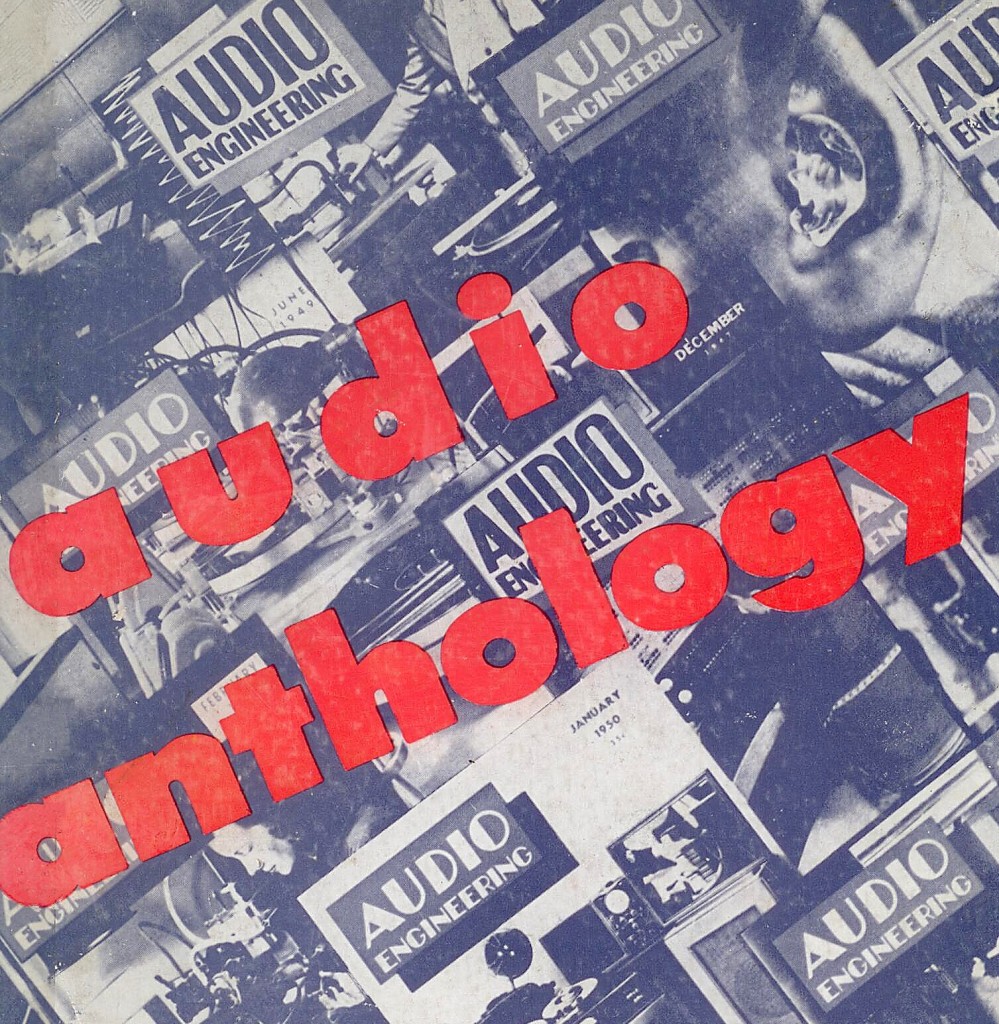 PS dot com reader Paul R. was kind enough to send us a scan of “Audio Anthology,” (ed. C.G. McProud) a 124pp softcover published in 1950. “Audio Anthology” (hf. ‘AA’) is a collection of project-construction articles aimed at hi-fi (rather than pro audio) enthusiasts. All of the material had been previously published in Audio Engineering magazine during its first four years of publication (1947 -1950). See here, here, here, here, here, and here for previous 1940’s AUDIO ENGINEERING MAGAZINE coverage on PreservationSound.
PS dot com reader Paul R. was kind enough to send us a scan of “Audio Anthology,” (ed. C.G. McProud) a 124pp softcover published in 1950. “Audio Anthology” (hf. ‘AA’) is a collection of project-construction articles aimed at hi-fi (rather than pro audio) enthusiasts. All of the material had been previously published in Audio Engineering magazine during its first four years of publication (1947 -1950). See here, here, here, here, here, and here for previous 1940’s AUDIO ENGINEERING MAGAZINE coverage on PreservationSound.
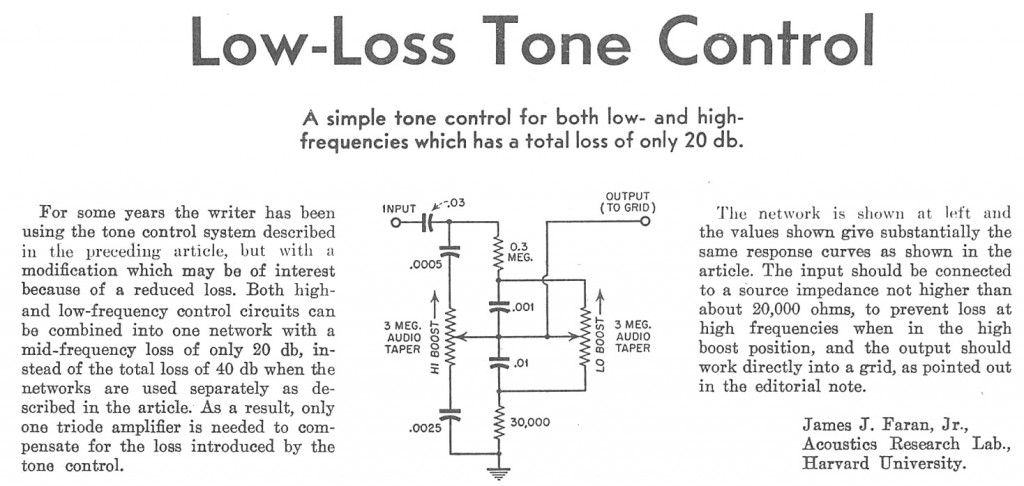 Above, an interesting boost-EQ stage that could be helpful in an instrument or mic amplifier. Can any of our helpful readers advise which caps or resistors in this circuit could be modified (and within what range) to alter the turnover frequency of the two filters at work here? I am guessing that the answer is: all four caps that follow the input DC blocking cap… which would basically get us back to this piece, which i swore i would never build again…
Above, an interesting boost-EQ stage that could be helpful in an instrument or mic amplifier. Can any of our helpful readers advise which caps or resistors in this circuit could be modified (and within what range) to alter the turnover frequency of the two filters at work here? I am guessing that the answer is: all four caps that follow the input DC blocking cap… which would basically get us back to this piece, which i swore i would never build again…
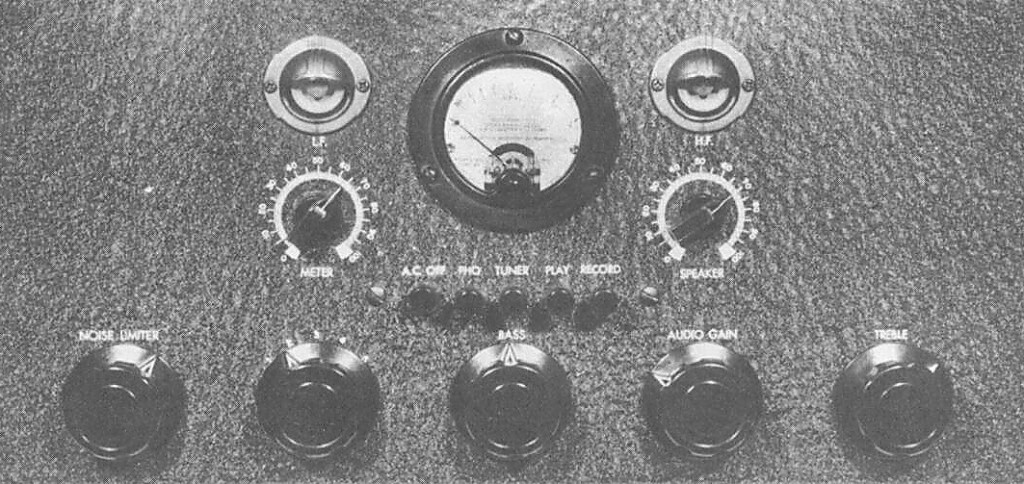 Above, the most complicated tube amp I have ever seen. Kinda feel like Shadow Hills Engineering must have come across this image at some point. Dynamic noise suppressor, phono pre, two eq controls, visual feedback of high and low frequency drive, variable metering, tons of input switching… talk about the kitchen sink. This project is organized around the very interesting 6AS7G dual-triode power amplifier tube: basically two 2A3s in one glass envelope with a 6V heater supply. This is potentially some useful information, especially when you consider that a 6As7G is only about $13 from AES (priced out 2A3s lately?). I think that there could be a unique new guitar amplifier in the works soon…
Above, the most complicated tube amp I have ever seen. Kinda feel like Shadow Hills Engineering must have come across this image at some point. Dynamic noise suppressor, phono pre, two eq controls, visual feedback of high and low frequency drive, variable metering, tons of input switching… talk about the kitchen sink. This project is organized around the very interesting 6AS7G dual-triode power amplifier tube: basically two 2A3s in one glass envelope with a 6V heater supply. This is potentially some useful information, especially when you consider that a 6As7G is only about $13 from AES (priced out 2A3s lately?). I think that there could be a unique new guitar amplifier in the works soon…
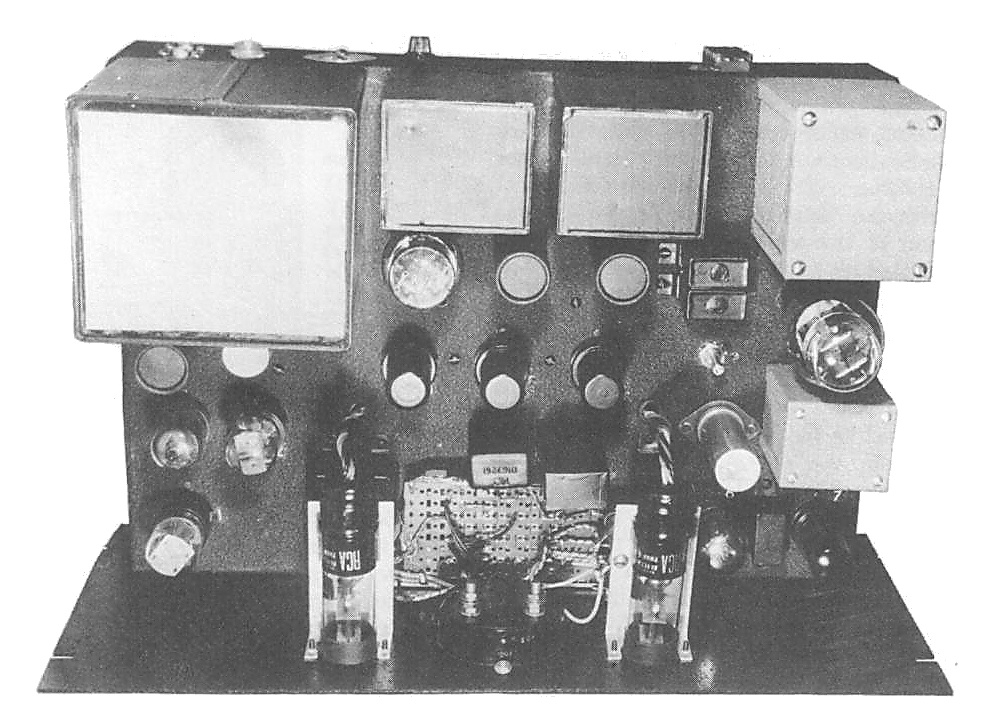 My lord. At least they didn’t try to thrown in an AM/FM tuner. Follow the link at the end of the this post for schematics and parts lists for some 6AS7G amplifiers.
My lord. At least they didn’t try to thrown in an AM/FM tuner. Follow the link at the end of the this post for schematics and parts lists for some 6AS7G amplifiers.
‘Audio Anthology Vol 1’ is available at Amazon dot com.
FOLLOW THE LINK BELOW for 6AS7G project schematics…
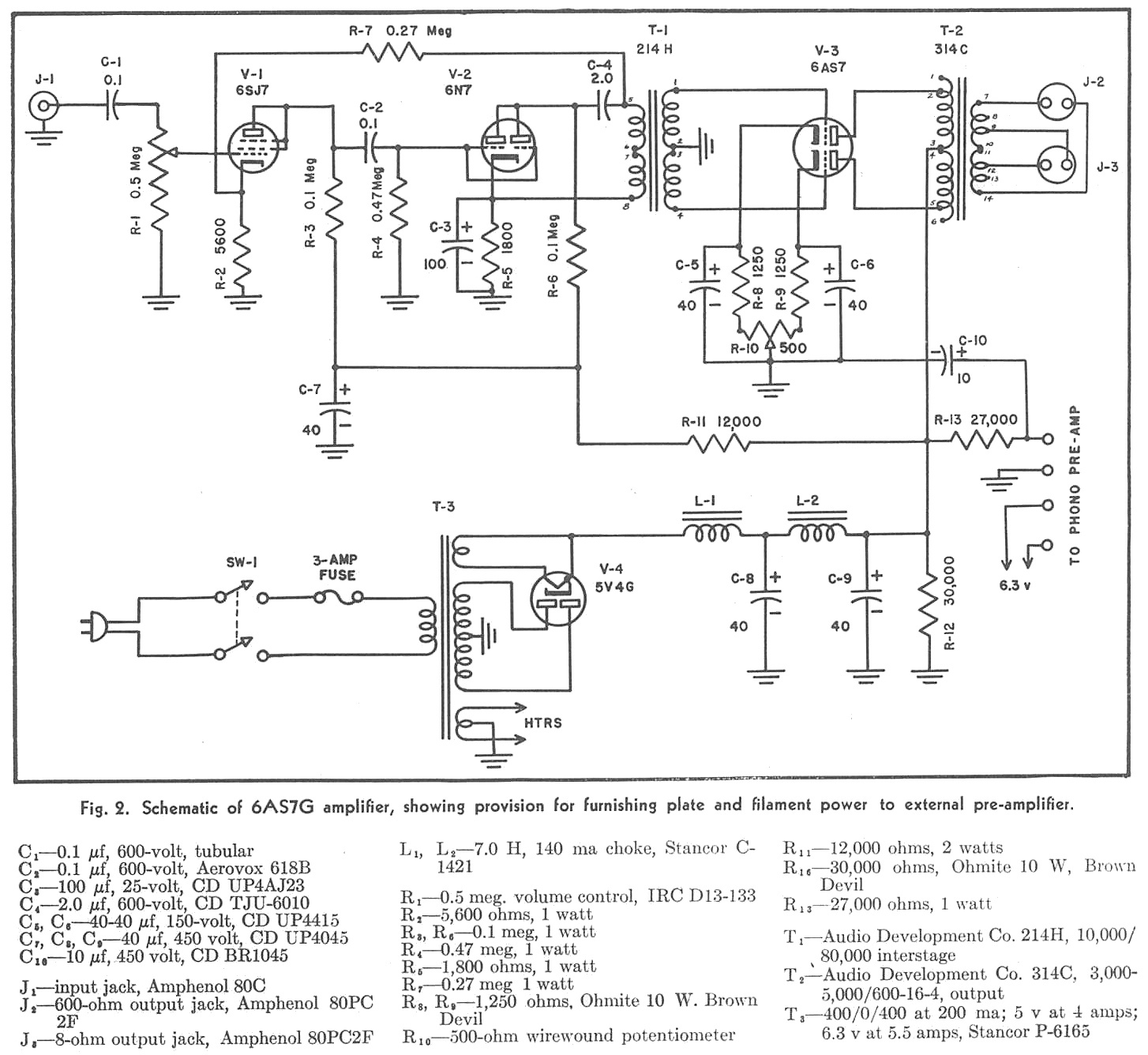 Above, the basic 10-watt 6AS7G amplifier schematic. I imagine that an additional input stage might be required for use as an instrument amplifier, probably just a single 6J5 ahead of the volume pot… and you wouldn’t want that pot loading your guitar pickup anyhow.
Above, the basic 10-watt 6AS7G amplifier schematic. I imagine that an additional input stage might be required for use as an instrument amplifier, probably just a single 6J5 ahead of the volume pot… and you wouldn’t want that pot loading your guitar pickup anyhow.
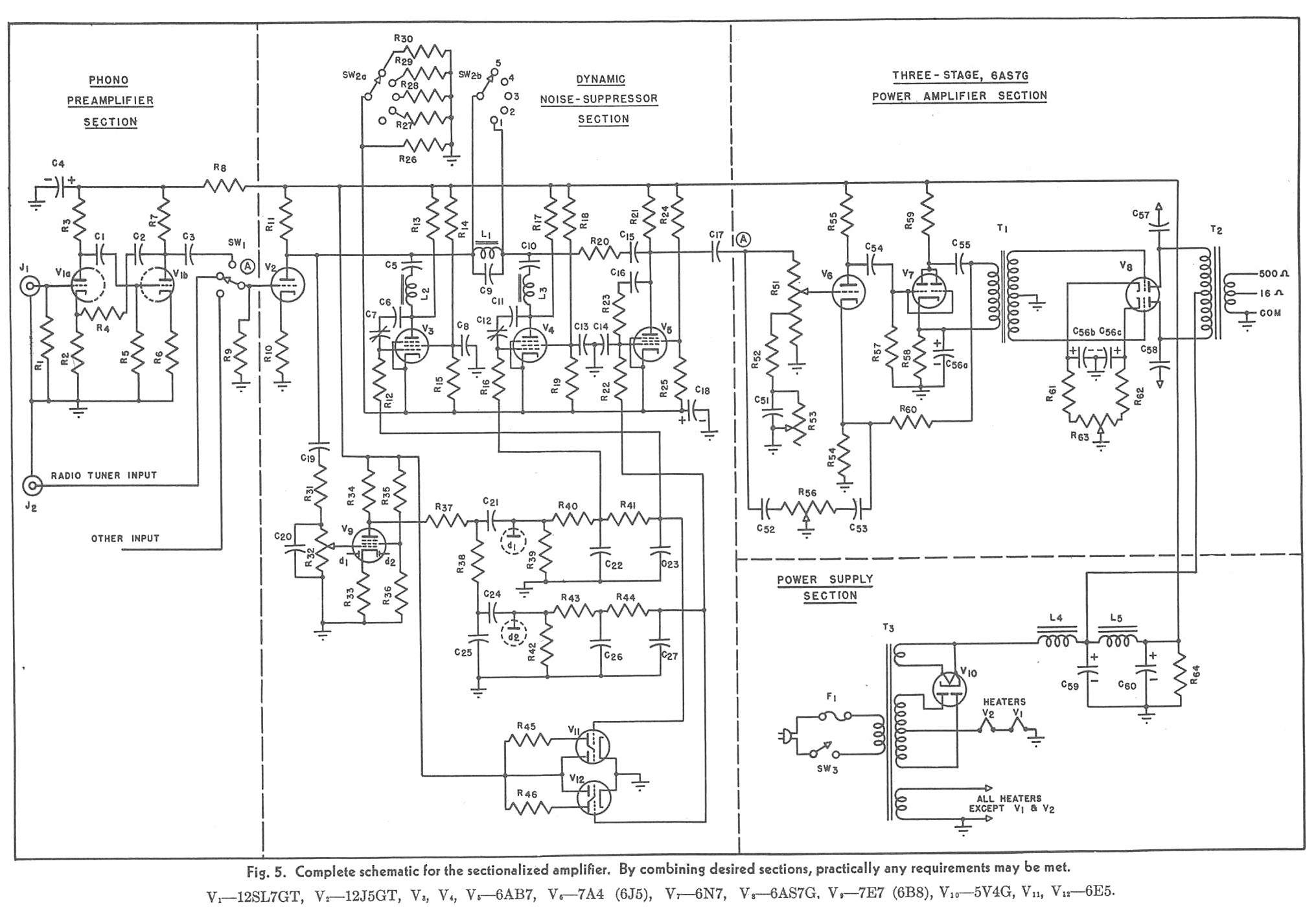 …and above, the schematic for the monster illustrated earlier.
…and above, the schematic for the monster illustrated earlier.
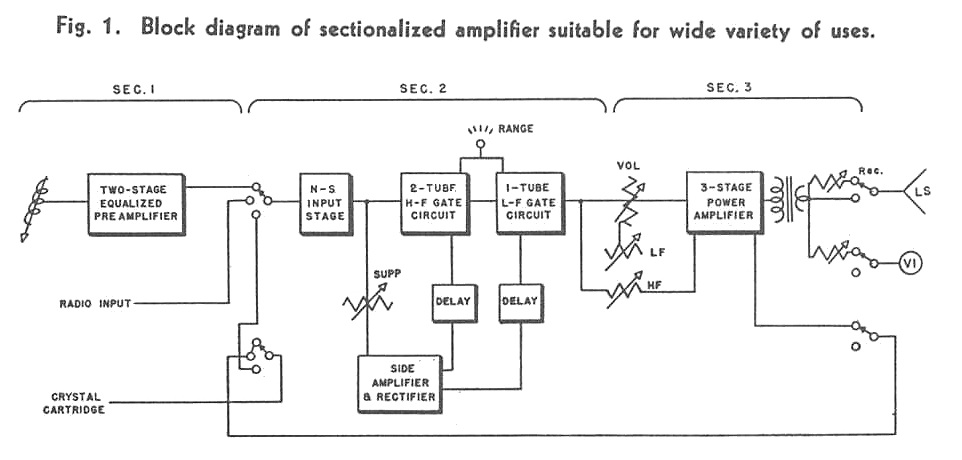
 Anyone out there ever scratch-built an all-tube amp of this (or greater…) complexity? Send us some images…
Anyone out there ever scratch-built an all-tube amp of this (or greater…) complexity? Send us some images…
4 replies on “Audio Anthology: Collected Hi-Fi articles from AUDIO ENGINEERING in the 1940s”
There were actually seven “Audio Anthology” books issued, six of which were reprinted by Ed Dell’s OCSL/Audio Amateur apparat. They published a fair number of 6AS7 projects-all transformer driven, and without feedback because you can’t put a NFB loop across two transformer stages. And without NFB there is no fidelity, not without some even more exotic techniques.
The coupling transformers are not made anymore-Tango and Tamura in Japan make a couple, but usually not the right ones, and they are very expensive.
And a guitar amp with 6AS7s isn’t going to sound like a guitar amp-it might be useful for jazz, country or steel guitar players, but they’re perfectly happy with their Peaveys and Polytones.
You could build a RC coupled 6AS7 amp if you used a driver stage with about 400 volts and enough gain stages. The 6AS7 will only take about 200 volts though so you will need to design a unorthodox power supply. You could cut that down if you used a choke coupled stage like the Brook triode amps or the Altec 1570B.
The 6AS7 and the 6080 will run happily at 300 VDC ! I don’t know why people make the assumptions that they can only handle 200VDC, unless lurking in the OTL fog of circuits has corrupted the mind. I wish people would not publish misinformation about tube circuits, this happens all over the net these days. I have built tried and true circuits using these tubes off and on for 40 plus years at plate voltages of 300+ VDC range without sacrificing lifespan of the tubes, it’s a no-brainer even without interstage transformers. I would like to know why you “feel or think” the 6AS7 is “only” good for 200 volts B+… Please let me in on the reasoning behind your statement. Thank you
Not to change the subject but one of these articles covered the conversion of a tube AM car radio to an exceptionally good home radio receiver. The standard rectifier, vibrator and power supply were removed and the output transformer was replaced with a larger unit or the power tube replaced with a cathode follower for use with an external amp. A small B+ and filament supply was fabricated or the old mono power amps had a socket providing B+ and heater power. These old radios could be had from junkyards for a dollar or two even then because the early ones would fit only the car they came from. Any old tube AM radio or any solid state AM only set from the earliest ones to the early eighties will perform very, very well much better than say a Superadio III or a CCRadio. The tube ones do sound better. I used to have one from a fifties Chrysler that in northern Nevada would get stations in Chicago, St. Louis and oftentimes Vancouver BC-every night. Avoid “Wonderbar” sets, GM hybrid sets and non-Big Three factory radios and stick with AM only sets.
Some years ago a customer of mine bought in a small bench top stereo AM/FM Tube Receiver which he purchased off eBay, and wanted me to give it a general service. Unfortunately I can’t recall the brand name now, as it was so long ago. I do recall it was not a brand I had seen before and possibly a USA model. It did not need very much servicing at all – as it was quite functional and well looked after. The main thing I noted with it when having it run in the workshop on test was the amazing sound quality when operating on FM. It was smooth and very mellow with a solid but not overpowering bass, running through a very lo-fi amplifier we had as a test amp in the workshop. The tubes used as I recall were very standard 6X4/ 6AU6 / 6BE6 / 6AV6; etc. Even on AM it was very good and quite noticeably better than a standard AM tube radio. It was stable and had no hiss or crackling as normally heard on almost all AM and Cheap FM sets. As a result – I took it home and used it for the following week on a much better amplifier, where it certainly came to life with some half decent speakers. After about a day of using this receiver, I was hooked on its quality and the amazing sound it was capable of delivering. I did not want to turn it off. Even my wife noted on how good it sounded.
The point of this post is – that I have a lot of respect for Vacuum Tube Equipment and the sound quality it produces.
It’s so rare to see anything with tubes nowadays, so when one does find such, the sound quality is immediately apparent to a good ear. Even a humble tube receiver can sound very “addictive” when used and well worth the time and trouble to find an old unit and resurrect it OR build your own from an old schematic.